Example 7
When the present owner bought this house, it was actually condemned to be demolished and replaced by a large four bedroom house of uninspiring design.
Following negotiations with the planners, the original cottage was retained, restored and subsequently extended.

This is a work-in-progress, and more pictures will be added when work is finished.
Example 8
This house, originally a gamekeeper's cottage, needed a large entertaining room. The green oak extension took around six months to complete. Note the tapering tie-beams which match the beams on the original front of the house.


Example 9
The Basin at Tregagle was formerly the location of the ADC office and studio. The building was bought as a ruin some 30 years ago, having been derelict for at least 20 years before that. It was rebuilt and extended, and has been gently growing ever since!

Some details at The Basin.

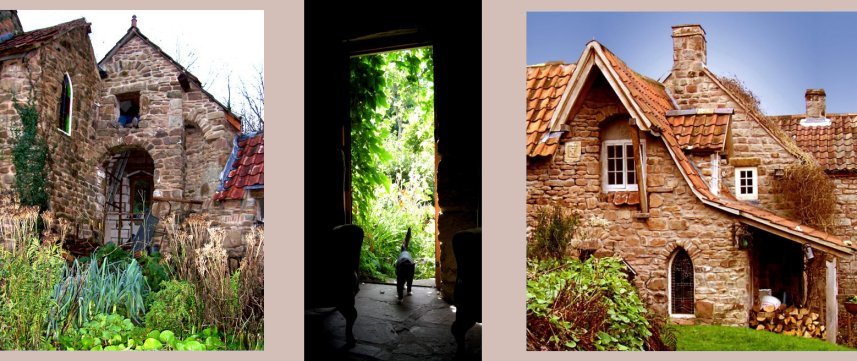
...and some of the windows.

Example 10
This house originates from the 1500s or earlier, but sadly suffered “improvements” in the 1980s that are difficult if not impossible to reverse. Also it had become a memorial to the art of the conservatory salesman, having an enormous UPVC structure attached. The new owners decided to dispose of the plastic monstrosity and give the house a more dignified look with an oak and stone replacement. On the left of the picture below, the transformation is nearing completion. On the right, the white rendered section is awaiting its new stone face.

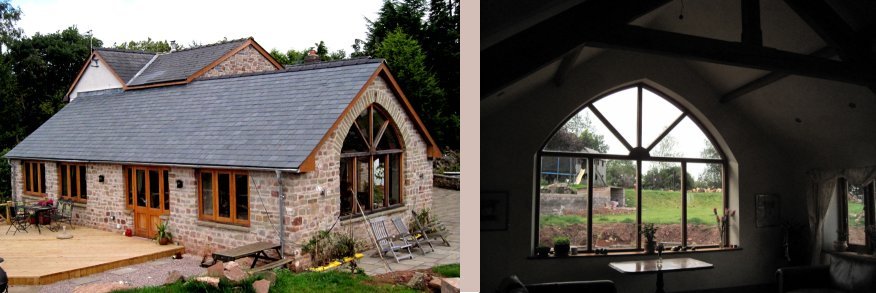
Example 11
Originally a 16th Century Watermill, this house was of ancient cruck timber frame construction with stone outer walls. It had been extended in the late Victorian period with a red-brick section which included a shallower pitched roof, which was later extended again with a plastic and timber lean-to. In the picture on the left below, the Victorian addition is end-on and pebble-dashed, and the medieval roof is just visible behind it. The picture on the right below shows the medieval end of the building.

When we were called in, we were asked to design an extension. It was planned that the change in roof pitches on the original building should be reflected in the new section and the original medieval section renovated. Although the house more than doubled in size, it retained its cottage charm.

Example 12
The owners of this contemporary house wanted a little more storage space and a larger bedroom. We offered a range of design alternatives and the owners opted for extra loft storage accessed from the airing cupboard and a larger en-suite rear bedroom. The bedroom has doors that lead directly onto the raised rear garden, and it can double as an extra living room when required.

Example 13
This house is a mixture of Georgian and Victorian architecture. ADC were brought in to "do something" with a dilapidated children's playroom at one end. The offending extension was removed and replaced with a traditional looking building designed to fit in with the existing frontage and housing a new kitchen and dining area.

The front and rear of the extension before renovation is shown above, and during renovation is shown below.

And the exterior and interior after completion is shown below.
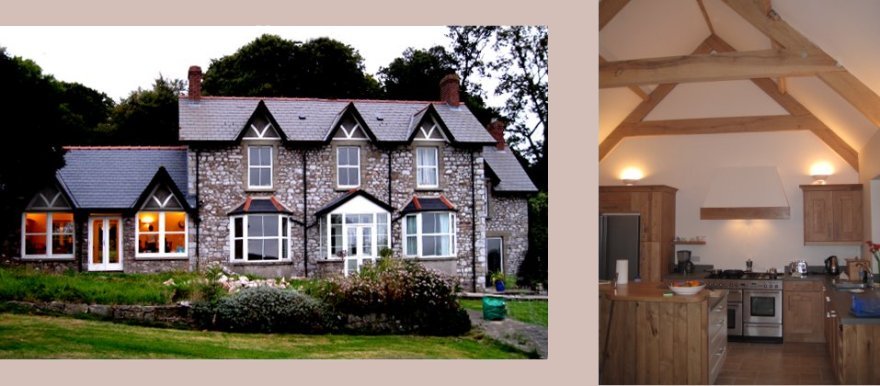
Example 14
The rear of this traditional farmhouse had a very unsympathetic flat roof which had collapsed. ADC recommended the construction of a traditional gabled roof. Before and after pictures of the work are shown below.

The same work shown from the end of the building.
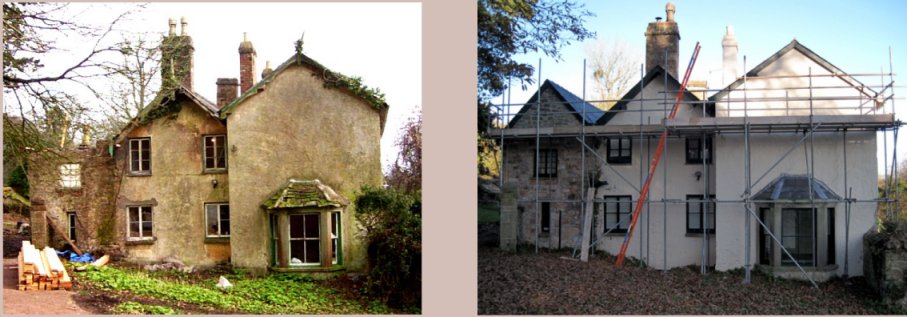
Updated over centuries, the original house can be seen in the centre and probably dates back to around 1650. The larger right hand gable is Georgian and was subsequently fitted with the Victorian bay window. The left side was originally a single storey lean-to but an upper floor was added in the 1930s. This was finished with the unsympathetic art-deco flat roof that was replaced.
At the opposite end of the building, ADC designed the barn conversion. Before and after images are shown below.



Example 15
Originally two farm workers' cottages, this house had several design problems including no front door, an inappropriate 1960s extension and most frustratingly, the whole house faced the wrong way. Surrounded by wonderful views, the main windows on the house faced the hillside. The side with the views had a corridor running full length. ADC proposed that the layout be turned around so that all rooms made the best possible use of the view. The corridor now runs on the side of the house nearest to the hillside.
The two views below are taken from the same angle. The brick chimney stack provides a point of reference for comparison. The picture on the left shows the property before work began, and the picture on the right shows work nearing completion. There is still a balcony to be fitted and a large window to be finished in the nearest gable.

This is a before and after view from the other side of the property.

The complicated roofing angles on the extensions were leaking. The redesign rationalised the extension, created an obvious front door and helped make the best of the views.
Example 16
The challenge was to keep a traditional Georgian frontage and at the same time create a contemporary feel to the inside of the house. The original house is on the left, with the extension to the right. It is only when one walks around the end of the house that one realises that the extension is a contemporary oak-framed building.
The pictures below show before and after views from roughly the same angles.


Example 17
This bakehouse was threatened with demolition but instead was restored and can now function as a bakehouse once again. The stone oven and fittings were restored, hence the very large chimney.
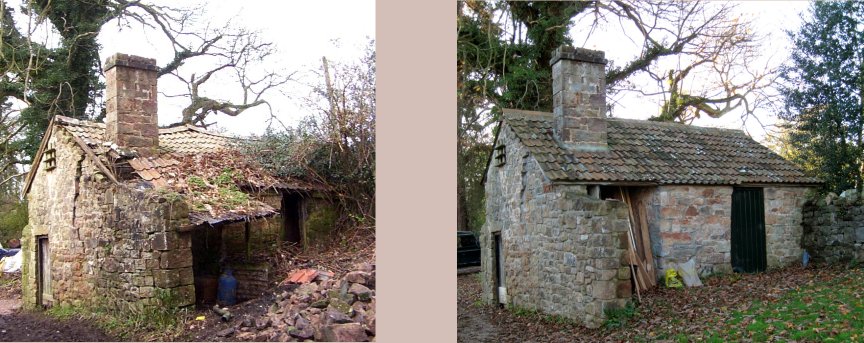
Example 18: garages
A garage is often overlooked when alterations to a house are planned. As a rough guide, if you have three bedrooms or more, then a garage or a larger garage should be considered. It does not cost extra to submit plans for a garage along with the designs for alterations to your house. If you decide to alter, extend or add a garage, consider the possibility of building a room above. The pictures below show a selection of garages and other ancillary buildings, some finished and some still under construction.


Most of the ancillary buildings shown here have been designed with rooms in the roofspace.

See also individual features
Please note: It must be stressed that without the foresight of the owners of the houses shown above, and without the quality of craftsmanship, planning, building control etc, of those who carried out the work, these buildings would not exist in the form that they do today. ADC would like to thank all those who have contributed to the success of our work.